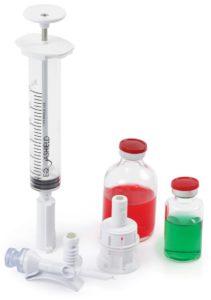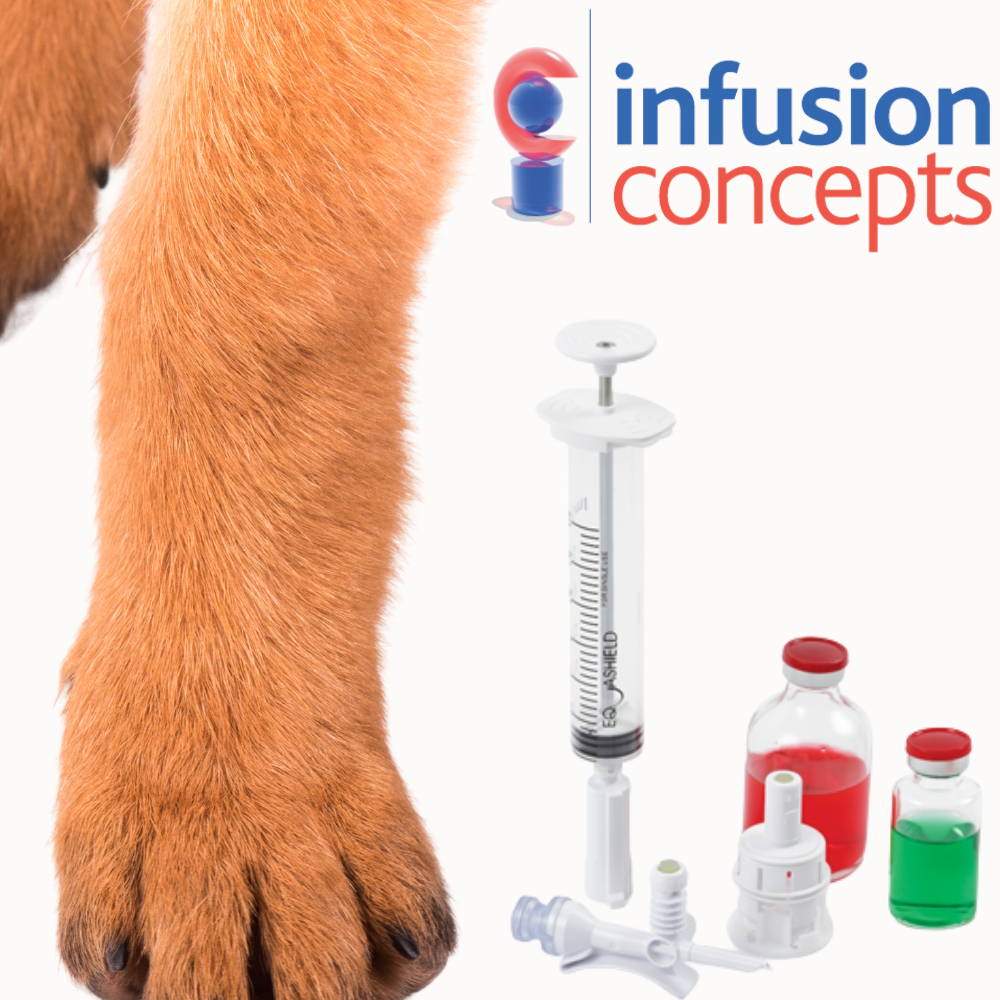Explore a closer look at Closed System Transfer Devices (CSTDs for short) made by Equashield.
What are CSTDs for?
CSTDs are designed and used to provide more accessible, safer preparation and administration of cytotoxic drugs during chemotherapy.
Equashield CSTDs equalizes pressure differentials, via a dual needle design. The unit contains sterile air, drawn from the sealed air chamber at the back of the syringe. This means there are no additional steps to equalize prssure.
Why Choose Equashield CSTDs?
There are a few reasons:
- CSTDs are safe to use.
- CSTDs are easy to use.
- CSTDs are proven to work – it originated in human medicine.
- CSTDs are inexpensive.
- CSTDs are a comprehensive system which means you have all the tools you will need to prepare and administer treatment safely. I will talk about them one by one.
Syringe Unit
Named as a unit because it is not ‘just a syringe’. It has a permanently attached adapter to the ‘business’ end with red markings on one side (I will discuss them later). This adapter prevents leakage and contains two needles – one for liquid, one for air – this provides pressure equalisation. The plunger is secured in the body of the syringe via a triple-layered O-ring – this prevents vapour from escaping.
Vial Adapter(s)
Does what it says – it securely clips onto the vial and then allows a secure connection to the syringe unit – it also has red markings on one side (you probably know by now they are for).
Luer Lock Adapter
This allows a connection between the syringe unit to any female Luer lock (ideally needle-free type). It also has red markings (this goes on, I am afraid).
Spike Adapter
It attaches directly to the fluid bag to which the adapter will add the drug. Flow is allowed only one way – into the bag! The syringe unit attaches to the end with red markings (again) and provides a secure connection.
This list is not exhaustive. Below are some visual examples.
Syringe Unit, Vial Adapter and Spike Adapter

Female Luer Lock Adapter Attached to T-Connector

NOW – red markings. They use a Red-to-Red system – the idea is you align red markings, and you can’t go wrong.
To connect – push it in, and it is ready. To disconnect:
From vial adapter – pull syringe unit out, and that is it.
From other adapters – depress the part with red markings and pull the syringe out.
Try to avoid the temptation to twist as you pull.
I am confident everyone would be able to use CSTDs with relative ease. It does not mean everyone will. If you are working in a practice where chemotherapy is rarely carried out, you probably would consider using a ready-made kit.
If chemotherapy is a common occurrence or you would like to do it yourself (always worth talking to an oncologist, if in doubt or for moral support), the CSTD is the way forward (in my opinion, that is).
There is a ‘Try before you buy’ option as well.
Questions, suggestions and thoughts are very welcome!









